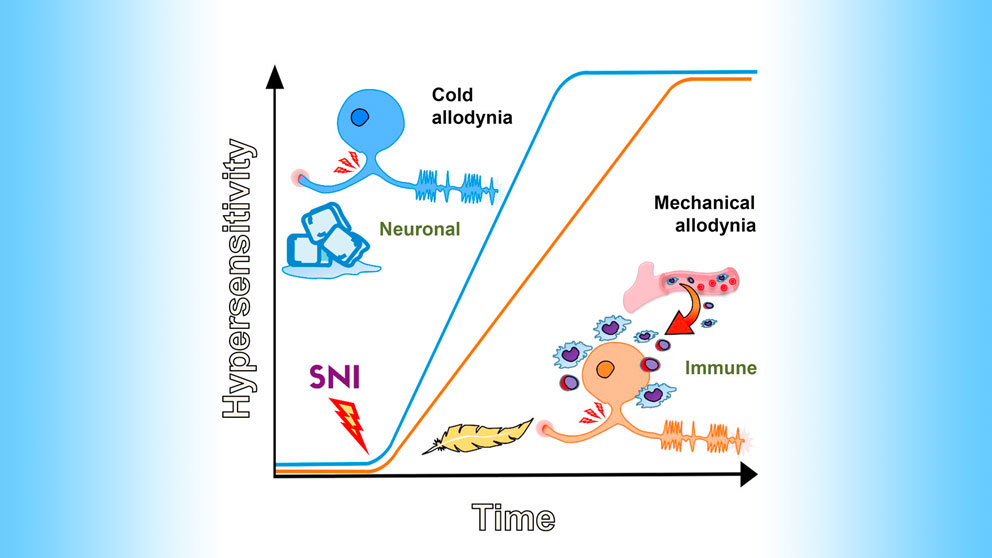Even after an injury to a body part has healed, pain often persists if there was nerve damage. This chronic neuropathic pain often involves hypersensitivity to stimuli that previously did not provoke discomfort, a condition known as allodynia. Two common forms of allodynia are hypersensitivity to cold and to touch, but the mechanisms underlying them are not well understood.

Allodynia research progress
A research team led by researchers from Harvard Medical School and including JAX Associate Professor Elissa Chesler, Ph.D.Develops software tools and resources for multi-species data integration in the study of health and disease and researches the genetic and biological basis for relationships among behavioral traits including addiction and other behaviors.Elissa Chesler, Ph.D. , used gene expression data to better characterize allodynia. As they report in a paper, “Mechanistic Differences in Neuropathic Pain Modalities Revealed by Correlating Behavior with Global Expression Profiling,” published in Cell Reports, they found important timing and gene expression differences between the different forms of allodynia.
Working with a nerve injury mouse model, the research team observed that cold sensitivity develops more quickly than tactile allodynia. Given that the timing differed, the researchers investigated further, hypothesizing that different mechanisms might underlie the two different forms of allodynia. And that’s what they found.
The team analyzed changes in global gene expression in the dorsal root ganglia, structures that contain clusters of sensory nerve cell bodies at the root of spinal nerves. For cold allodynia they found changes in the expression of 137 transcripts, and the top biological function was for neurological function and disease. For tactile allodynia they found changed expression for 36 transcripts, and most of them were involved with immune function and disease. To further explore the role of the immune system, the researchers transiently deleted circulating macrophages in the mice and found that they didn’t develop tactile allodynia but still developed cold allodynia as usual, reinforcing the gene expression results.
The different mechanisms provide important distinctions between the root causes of the two forms of chronic pain. Characterizing the type of pain experienced following nerve injury has the potential to provide the information needed for more effective interventions. Targeted therapies may provide relief by focusing on blocking neural signaling specifically for cold allodynia and blocking immune activity for tactile allodynia.
Cobos et al. 2018. Mechanistic Differences in Neuropathic Pain Modalities Revealed by Correlating Behavior with Global Expression Profiling. January 30. Cell Reports 22: 1–12. doi.org/10.1016/j.celrep.2018.01.006